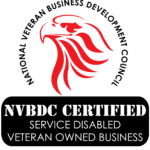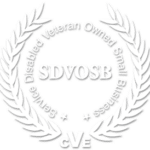Navigating the complexities of modern business demands a strategic approach to operational efficiency. Standard Operating Procedures (SOPs) stand out as key instruments in achieving and maintaining organizational excellence. This article explores the profound purpose and significance of SOPs, shedding light on their crucial role in accelerating training processes, curbing knowledge loss, elevating productivity, minimizing errors, ensuring regulatory adherence, and fostering a consistent customer experience.
Understanding the Essence: The Purpose of an SOP
At its core, the purpose of an SOP is to act as a meticulous guide, providing comprehensive instructions on how to perform a task correctly. It transcends the realm of mere documentation; it is the beacon that illuminates the path for every employee, offering a systematic approach to tasks that ensures consistency, accuracy, and efficiency. A well-crafted SOP goes beyond being a set of instructions; it is a commitment to operational excellence.
Why SOPs Matter: Navigating the Complex Terrain of Efficiency
- Reducing Training Time: SOPs serve as invaluable tools during onboarding. By providing a standardized roadmap, they significantly reduce the time and effort required to train new team members. The learning curve becomes more manageable, and employees can swiftly integrate into the operational workflow.
- Preventing Knowledge Loss with Employee Turnover: In the dynamic landscape of the corporate world, personnel changes are inevitable. An SOP acts as a custodian of institutional knowledge, preserving critical processes and preventing the loss of vital information during employee transitions.
- Increased Productivity: SOPs are catalysts for productivity. By offering a standardized and efficient approach to tasks, they eliminate ambiguity and empower teams to achieve more in less time. Productivity becomes not just a goal but a natural outcome.
- Reduced Errors: Precision is the antidote to errors. SOPs serve as fail-safes, guiding employees through tasks with meticulous detail and minimizing the risk of costly mistakes. This is particularly crucial in processes where accuracy is non-negotiable.
- Increasing Consistency with Customer Experience: Consistency is the hallmark of a strong brand. SOPs ensure that each interaction, whether internal processes or customer-facing activities, adheres to the same high standards. This consistency fosters repeat customers and builds unwavering brand loyalty.
- Meeting Legal & Regulatory Compliance Standards: In an environment where regulatory compliance is paramount, SOPs provide the necessary framework to ensure every action aligns with legal and regulatory requirements. They become the shield that safeguards the organization from potential legal pitfalls.
Crafting the SOP Masterpiece: An Art and Science
This structure serves as a guiding star for crafting SOPs that transcend the ordinary. Let’s break down the key elements that transform it into a masterpiece:
- Title Page: The SOP’s introduction, complete with a unique identifier, effective date, and revision history, sets the stage for what follows.
- Table of Contents: Like the index of a captivating novel, the table of contents provides a roadmap, guiding readers through the intricate chapters of the SOP.
- Introduction: The introduction serves as the prelude, outlining the purpose, scope, and applicability of the SOP. It provides context for the journey that follows.
- Definitions: A glossary or list of definitions ensures that every member of the orchestra understands the specialized language used in the SOP.
- Roles and Responsibilities: Clearly outlining who plays which instrument in the symphony, this section defines the roles and responsibilities of individuals involved in the processes covered by the SOP.
- Procedure: The heart of the SOP, this section presents the step-by-step procedures in a clear, sequential order. Each step follows a consistent format, ensuring clarity and ease of understanding.
- Forms and Attachments: Supporting documents, forms, or templates are attached here, providing the necessary tools for executing the procedures outlined.
- Quality Control: Like a vigilant conductor, this section specifies any quality control or assurance measures to be followed during the process. It ensures that every note played is in harmony with the overall composition.
- References: A list of external references, standards, regulations, or documents adds depth and credibility to the SOP. It connects the organization’s processes with industry best practices.
- Training and Documentation: Just as musicians rehearse before a performance, this section describes the training requirements for individuals involved in the process. It also outlines how documentation and record-keeping should be handled, ensuring a record of each performance.
- Review and Approval: Every masterpiece undergoes critique and refinement. This section outlines the process for reviewing, revising, and approving the SOP. It ensures that the SOP evolves and stays in tune with changing needs.
- Change Log: The history of changes and revisions made to the SOP is documented here. Dates, descriptions of changes, and authorization details are carefully noted. It serves as a testament to the evolution of the SOP over time.
- Appendices: Additional information, examples, or reference materials find their place in the appendices. Like bonus tracks on an album, these add depth and context.
- Distribution: Detailing how the SOP will be distributed and accessed ensures that every member of the orchestra has their sheet music and knows their part.
- Version Control: The SOP is labeled with its version, issue date, and revision history. This ensures that everyone is on the same page, playing the latest rendition of the organizational symphony.
- Contact Information: Like a helpful guide on this musical journey, contact information for those who can answer questions or provide further guidance is provided. It ensures that everyone knows where to turn when they need assistance.
In the landscape of organizational efficiency, Standard Operating Procedures (SOPs) assume a crucial role. They are more than mere documents to be filed away; rather, they function as meticulous guides, ensuring each operation is executed with precision and excellence. As organizations navigate the complexities of daily tasks, SOPs stand as steadfast directives, steering each aspect of the operation towards optimal performance.
These procedures are integral in maintaining consistency, regardless of changes in personnel, market dynamics, or regulatory updates. A well-structured standard operating procedure becomes a tangible demonstration of an organization’s commitment to excellence, precision, and a culture of continuous improvement.
In the pursuit of operational mastery, SOPs serve as the guiding principles, leading the organization towards consistent success. They are not merely guidelines; rather, they enable operational excellence. For those seeking assistance in developing their SOPs, templates are available to simplify the process and provide a structured foundation for organizational efficiency. Looking for more insight? Reach out to ACE.



